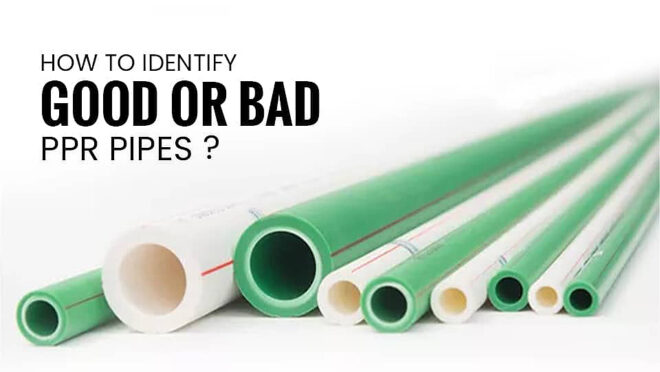
Why White PPR Pipes Are Better Than Green PPR Pipes?
When choosing PPR pipes for plumbing systems, the color difference between white and green may seem purely aesthetic. However, white PPR pipes offer several advantages over green PPR pipes in terms of health, chemical composition, safety, and long-term performance. In this article, we will explore why white PPR pipes are a better choice.
1. Health & Hygiene
White PPR pipes are widely preferred in drinking water systems because of their high purity and non-toxic properties. The materials used in white PPR pipes are carefully formulated to meet strict health and food-grade safety standards, ensuring that no harmful substances leach into the water.
Why White PPR Pipes Are Healthier?
✔ No Heavy Metals – White PPR pipes do not contain lead, cadmium, or other harmful additives, making them safe for potable water.
✔ No Chemical Leaching – The composition of white PPR pipes minimizes the risk of chemical contamination, ensuring clean and pure drinking water.
✔ No Taste or Odor – Unlike some green PPR pipes, which may slightly alter the taste or odor of water due to additives, white PPR pipes maintain natural water purity.
2. Chemical Composition & Safety
While both white and green PPR pipes are made from Polypropylene Random Copolymer, the difference lies in the additives and dyes used in manufacturing.
How White PPR Pipes Are Safer?
✔ Minimal Additives – White PPR pipes contain fewer additives, ensuring a purer and safer material composition.
✔ No Toxic Colorants – Some green PPR pipes use low-quality dyes that may contain harmful chemicals, whereas white PPR pipes avoid unnecessary colorants.
✔ Higher Resistance to Chemical Reactions – White PPR pipes are less likely to react with disinfectants and water treatment chemicals, reducing risks of corrosion and contamination.
3. UV Resistance & Longevity
PPR pipes are typically not recommended for direct sunlight exposure, but white PPR pipes have better resistance to UV rays compared to green PPR pipes.
Why White PPR Pipes Last Longer?
✔ Better UV Resistance – White PPR pipes reflect more sunlight, reducing heat absorption and preventing material degradation.
✔ Longer Service Life – Due to lower heat absorption, white PPR pipes remain durable for a longer time, preventing brittleness and early failure.
✔ Less Risk of Algae Growth – The interior of white PPR pipes stays cleaner with less chance of algae or bacterial growth, ensuring better water quality.
4. Aesthetic & Installation Advantages
White PPR pipes are often preferred in exposed installations due to their clean and modern appearance.
✔ Matches Interior Designs – White PPR pipes blend seamlessly with walls and ceilings, making them visually more appealing in homes and buildings.
✔ Preferred for Medical & Food Industries – Many hospitals, laboratories, and food processing units prefer white PPR pipes due to their hygienic appearance and compliance with safety regulations.
✔ Easier Inspection – Cracks, stains, and other issues are easier to detect and inspect on white surfaces compared to dark-colored pipes.
5. Thermal Efficiency & Performance
White PPR pipes offer better thermal insulation compared to green pipes, making them more efficient in hot and cold water applications.
✔ Better Heat Reflection – White pipes absorb less heat, keeping the water temperature more stable.
✔ Prevents Overheating – In hot water systems, white PPR pipes prevent excessive expansion and softening due to lower heat absorption.
✔ Maintains Water Quality – Green PPR pipes, when exposed to sunlight or heat, may experience thermal degradation, affecting water purity over time.
Conclusion
While both white and green PPR pipes serve similar functions, white PPR pipes are superior in terms of health, safety, longevity, chemical resistance, and thermal performance. They are widely chosen for potable water systems, hospitals, food industries, and high-standard plumbing applications.
